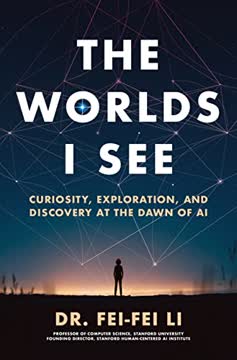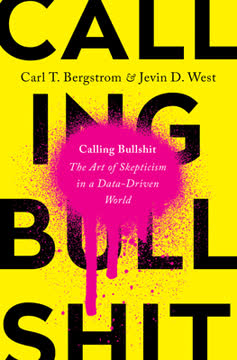Key Takeaways
1. Our new tools reveal a world of overwhelming complexity
We are at the beginning of a great leap forward in our powers of understanding and managing the future: rather than always having to wrestle our world down to a size we can predict, control, and feel comfortable with, we are starting to build strategies that take our world's complexity into account.
Overwhelming complexity. Our new technologies, particularly machine learning and the internet, are revealing the true intricacy of the world around us. This complexity far surpasses what our traditional models and laws can capture. We're learning that the world doesn't separate neatly into discrete events predictable by eternal laws. Instead, everything affects everything else, all at once.
Shifting paradigms. This realization is challenging our long-held assumptions about how things happen and our role in the universe. We're moving away from the idea that we can always understand and control our environment. Instead, we're developing strategies that embrace and work with complexity rather than trying to simplify it.
- Traditional view: World is orderly and predictable
- New perspective: World is complex and interconnected
- Shift from: Simplification and control
- To: Embracing complexity and adaptability
2. Machine learning creates models beyond human comprehension
Deep Patient's marketers will probably forestall the previous conversation by turning the inexplicability of its results into a positive point: "Medical treatment that's as unique as you are … and just as surprising!"
Inexplicable models. Machine learning systems, like Deep Patient in healthcare, can create models that surpass human understanding yet produce highly accurate predictions. These systems analyze vast amounts of data to find relationships humans might never notice. The resulting models can be so complex that even their creators can't fully explain how they work.
Implications for decision-making. This challenges our traditional notion that we must always understand the reasoning behind important decisions. In some fields, we may need to accept the recommendations of AI systems without full explanations, balancing the benefits of improved accuracy against the loss of transparency.
Examples of complex AI models:
- Deep Patient for medical diagnosis
- AlphaGo for game strategy
- Facial recognition systems
Challenges: - Explaining AI decisions to users/patients
- Ensuring fairness and avoiding bias
- Balancing accuracy with transparency
3. The internet demonstrates the power of unanticipation
Why anticipate when you can launch, learn, and iterate?
Embracing uncertainty. The internet has taught us the value of strategies that don't rely on anticipating every possibility. Techniques like minimum viable products, agile development, and open platforms allow businesses to adapt quickly to unexpected user needs and behaviors.
Power of openness. By creating open systems that others can build upon, companies like Facebook, Google, and even governments have generated far more value than they could have by trying to anticipate and provide every possible service themselves. This approach turns unpredictability from a threat into an opportunity for innovation and growth.
Strategies embracing unanticipation:
- Minimum Viable Products (MVP)
- Agile development
- Open APIs and platforms
- User-generated content
Benefits: - Faster innovation cycles
- Better adaptation to user needs
- Leveraging collective creativity
4. Interoperability is replacing simple causality
Interoperability is the new causality.
Beyond simple cause-effect. Our new technologies are revealing a world where simple cause-and-effect relationships are rare. Instead, we're seeing complex webs of interoperability, where elements from different systems can interact in unpredictable ways. This shift challenges our traditional understanding of how things happen and how we can influence outcomes.
Implications for prediction and control. In an interoperable world, small changes can have outsized effects, and distant elements can suddenly become relevant. This makes prediction more challenging but also opens up new possibilities for innovation and problem-solving. We're learning to think in terms of enabling connections rather than pulling levers.
Characteristics of interoperability:
- Works across different types of systems
- Enables unexpected combinations
- Not limited by distance or domain
Examples: - APIs connecting diverse software systems
- Standards like Schema.org for web content
- The Internet of Things
5. Strategies are evolving to embrace unpredictability
If we were to absolutely insist on drawing an upward-sloping line of progress for the internet itself, many of the biggest tick marks would be for what was given away.
From control to enablement. Traditional business strategies focused on narrowing possibilities and controlling outcomes. New approaches, exemplified by companies like Drupal, Tesla, and Google, aim to create open ecosystems that enable others to innovate in unexpected ways. This shift recognizes that in a complex world, the most valuable strategy may be to increase possibilities rather than limit them.
Open source and shared resources. Companies are finding value in giving away intellectual property, APIs, and development tools. This approach can accelerate innovation, establish de facto standards, and create network effects that benefit the original creator. It's a recognition that in an interconnected world, value often comes from enabling others rather than controlling everything yourself.
- Traditional strategy: Narrow focus, control outcomes
- New strategy: Open ecosystems, enable innovation
Examples:- Drupal's community-driven development
- Tesla's open-sourced patents
- Google's TensorFlow machine learning platform
6. Progress is no longer a linear path but an explosion of possibilities
The line of progress is not an arrow pointing up a hill. It looks much more like the densely branched maps of machine learning's model of the world.
Redefining progress. Our traditional view of progress as a steady, upward line is being replaced by a more complex, branching model. Advances in one area can lead to unexpected developments in seemingly unrelated fields. This new shape of progress reflects the interconnected nature of our world and the power of generative technologies.
Implications for innovation. This shift changes how we think about and pursue innovation. Instead of focusing solely on incremental improvements in a single direction, we need to consider how to create platforms and tools that enable a wide range of unexpected developments. Success may come from enabling others to innovate in ways we never anticipated.
Old model of progress:
- Linear
- Predictable steps
- Focused on specific goals
New model of progress: - Branching and interconnected
- Unpredictable leaps
- Focused on enabling possibilities
7. Meaning emerges from complex webs of relationships
Is a dumbbell a dumbbell apart from its complex web of relations to human bodies, exercise equipment, health, mortality, and vanity?
Relational meaning. Our new technologies are revealing that meaning doesn't come from isolating things and defining their essence. Instead, meaning emerges from the complex web of relationships between things. This shift challenges traditional ways of categorizing and understanding the world.
Implications for knowledge and data. This perspective changes how we approach knowledge organization and data analysis. Instead of rigid categories, we're developing more flexible, interconnected systems that can capture the rich context of information. This allows for more nuanced understanding and unexpected insights.
Traditional view of meaning:
- Based on essential qualities
- Hierarchical categories
- Clear boundaries between concepts
New view of meaning: - Emerges from relationships
- Network of connections
- Fuzzy boundaries and overlaps
Examples: - Knowledge graphs in search engines
- Tagging systems in social media
- Machine learning models finding unexpected correlations
8. Morality is shifting from principles to consequences
Operationalizing values means getting as specific and exact as computers require. Deciding on the application of values entails messy, inexact, and never-ending discussions.
From principles to outcomes. As we increasingly rely on AI systems for decision-making, we're being forced to shift from principle-based morality to more consequentialist approaches. This is because AI requires explicit, quantifiable rules rather than abstract principles. This shift is making us confront the messy reality of applying moral values in specific situations.
Challenges of fairness. Implementing fairness in AI systems is revealing how much easier it is to identify unfairness than to define positive fairness. This is leading to ongoing debates about how to operationalize values like equality and justice in ways that can be implemented in code.
Traditional moral philosophy:
- Based on abstract principles
- Focuses on intentions
- Seeks universal rules
Emerging AI ethics: - Focuses on measurable outcomes
- Deals with specific scenarios
- Requires explicit trade-offs
Ongoing challenges: - Defining fairness mathematically
- Balancing competing values
- Addressing unintended consequences
9. Explanations are tools, not absolute truths
Explanations are tools, as we discussed back in chapter 2. They are not a picture of how the world works; more often, they are a picture of how the world went wrong.
Purpose of explanations. We're learning to see explanations not as absolute truths about how the world works, but as tools for specific purposes. Explanations often focus on what's unusual or problematic, rather than capturing the full complexity of a situation. This shift helps us understand why some AI systems can make accurate predictions without providing human-understandable explanations.
Implications for AI and decision-making. As we rely more on complex AI systems, we may need to focus less on demanding explanations for every decision and more on defining the outcomes we want these systems to achieve. This doesn't mean abandoning transparency, but rather shifting our focus to ensuring systems are optimized for the right goals and constrained by our values.
Traditional view of explanations:
- Reflect absolute truth
- Should cover all aspects
- Necessary for trust
Emerging view of explanations: - Tools for specific purposes
- Focus on unusual or problematic aspects
- May not always be possible or necessary
Considerations for AI systems: - Define desired outcomes clearly
- Ensure alignment with human values
- Monitor for unintended consequences
Last updated:
Review Summary
Everyday Chaos by David Weinberger receives mostly positive reviews, with an average rating of 3.78 out of 5. Readers appreciate Weinberger's insights on machine learning, complexity, and the limitations of human understanding. The book explores how AI and technology are changing our perception of the world. Some find it thought-provoking and well-written, while others criticize its structure and repetitiveness. Many readers value Weinberger's accessible explanations of complex concepts and his ability to connect technology with philosophy and everyday life.
Similar Books










Download PDF
Download EPUB
.epub digital book format is ideal for reading ebooks on phones, tablets, and e-readers.






